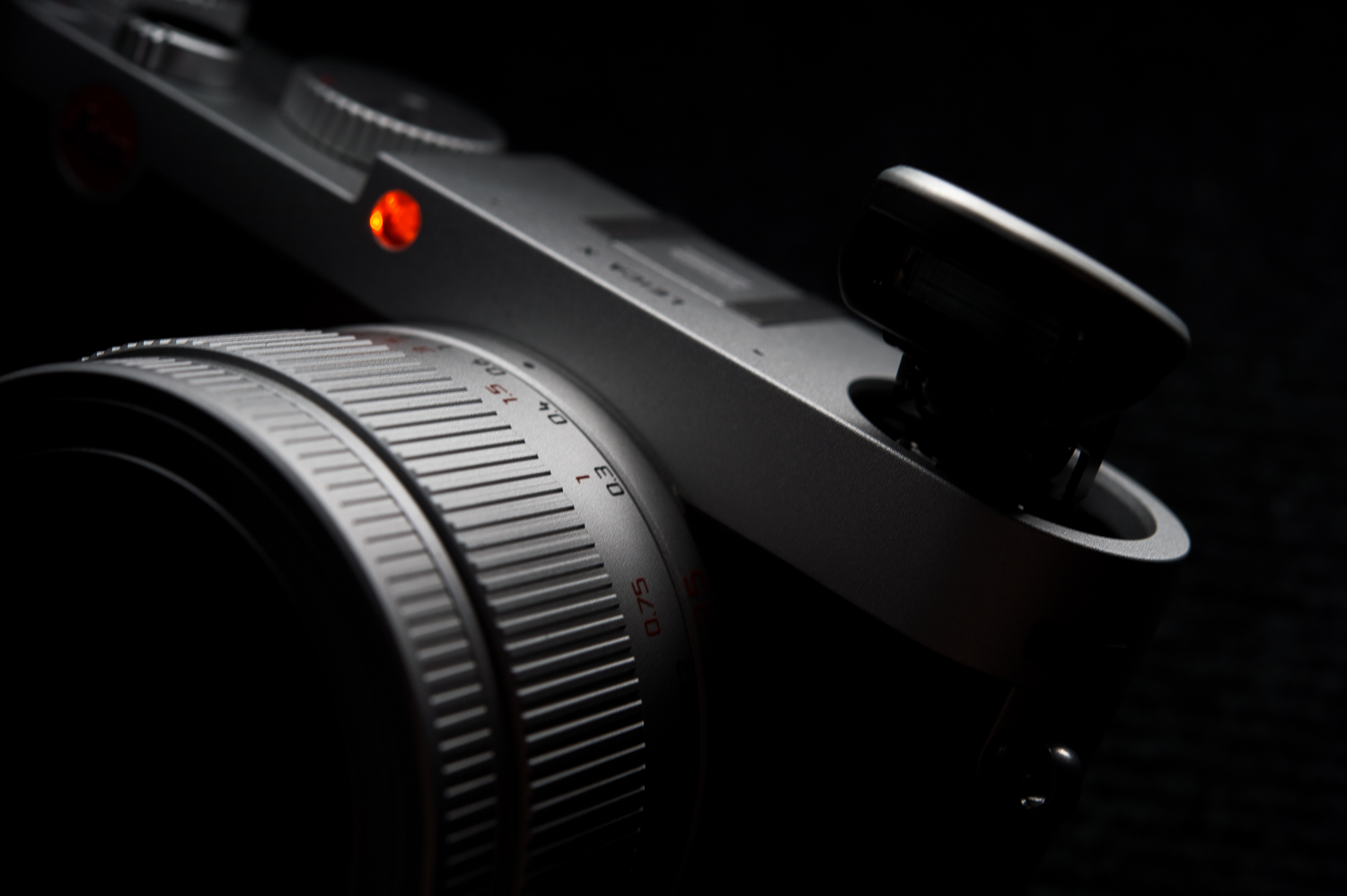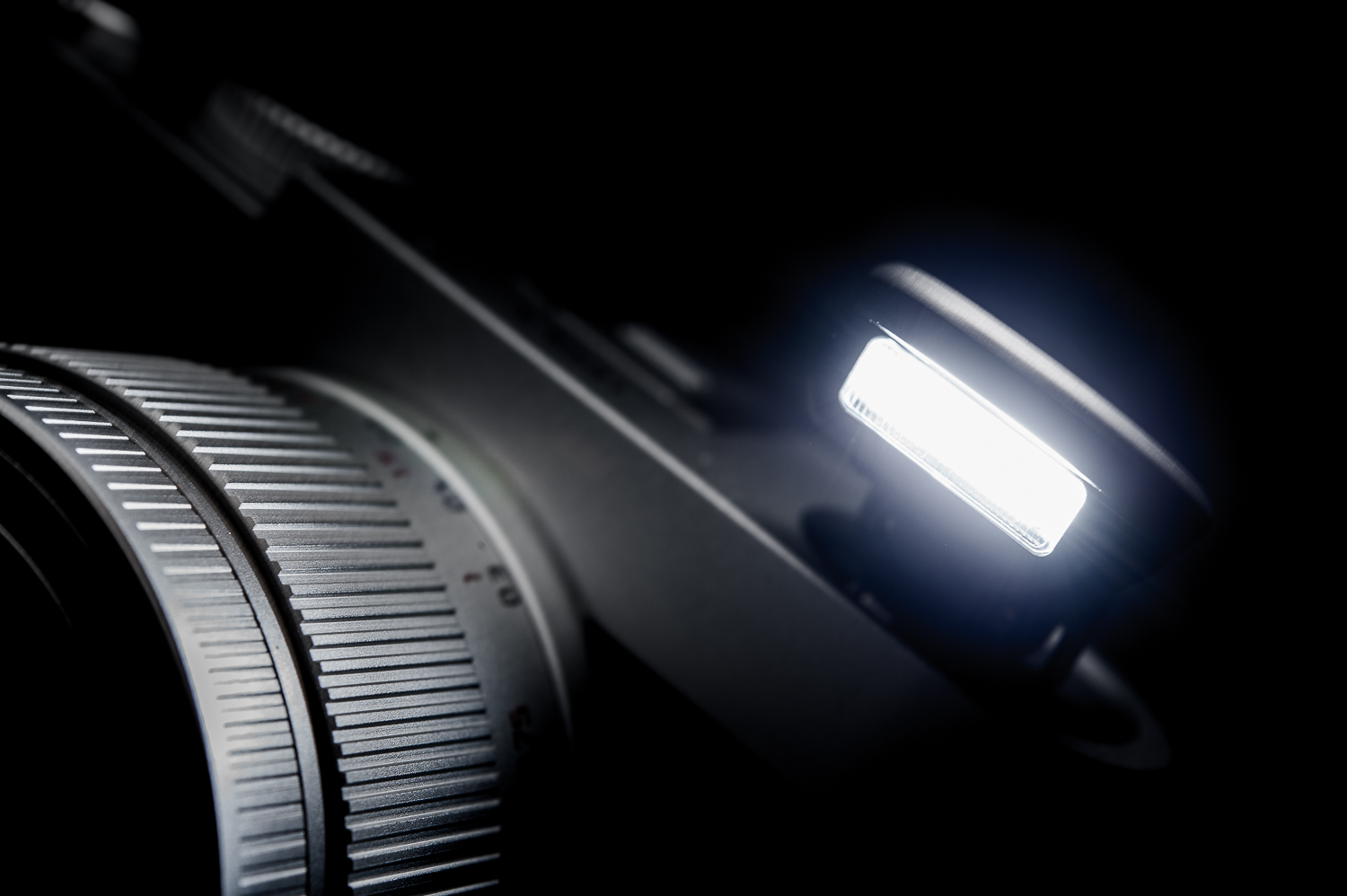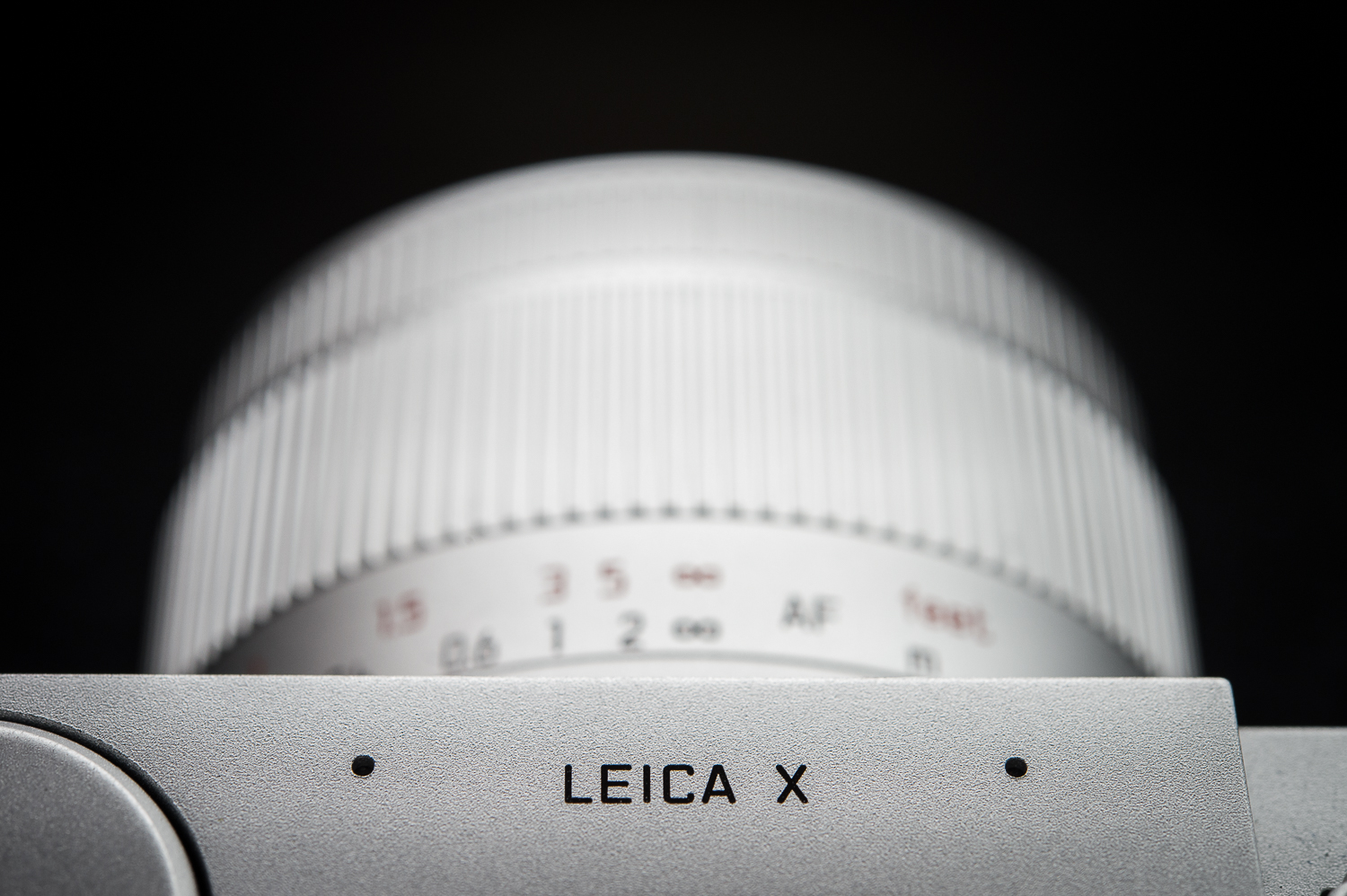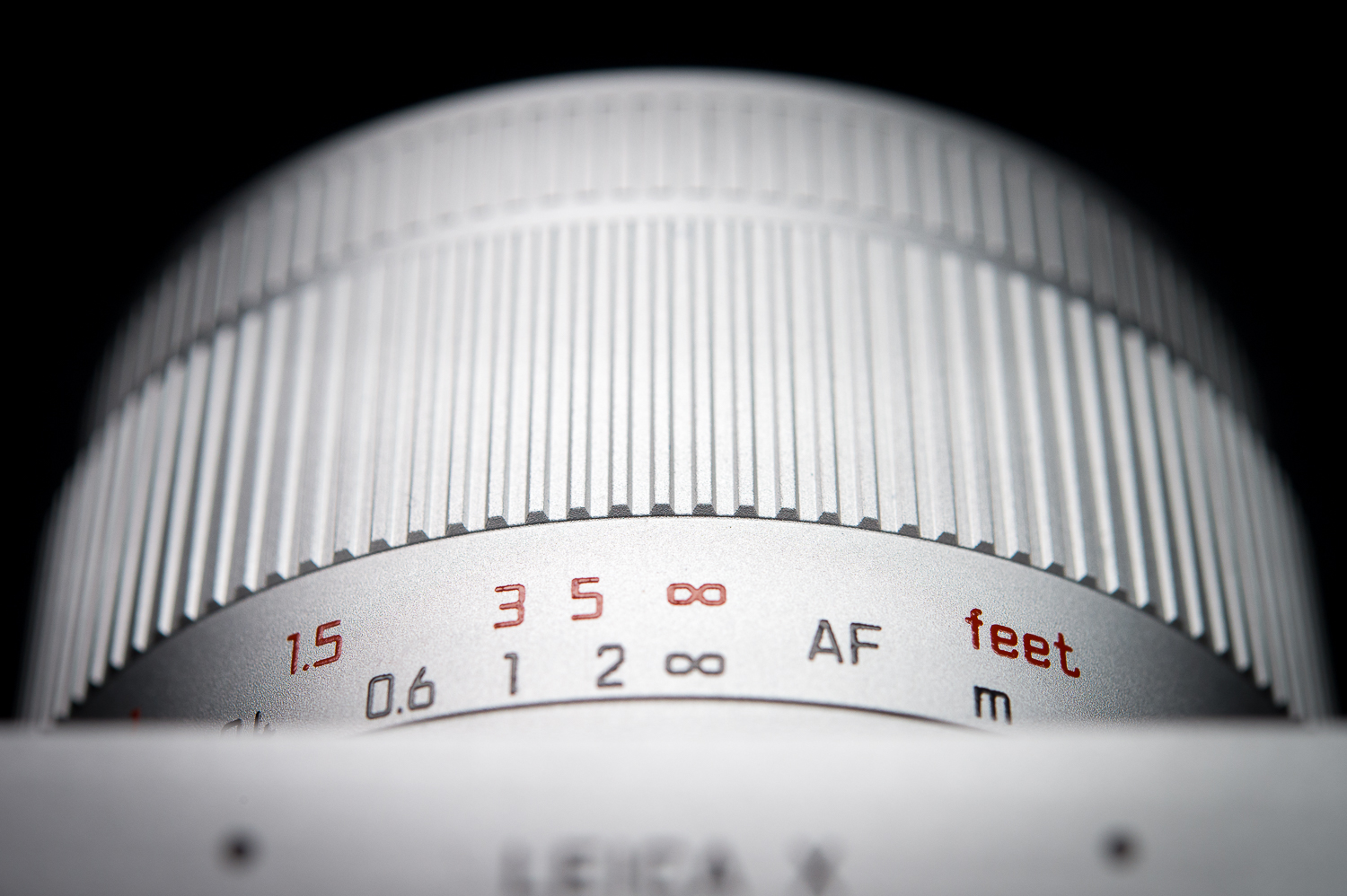Leica Camera is using 2014 to make some pretty serious statements in their company’s 100-year and M-system 60-year anniversaries. In doing so, they’re continuing the re-labelling of their systems by dropping the numbers preceding the M, S and now X system. The new Leica X follows the X1, X2 and X-Vario but this time it comes with an exciting addition of it’s new Summilux 23/1.7 lens, equivalent to approximately 35mm in field of view with a maximum aperture of f/1.7. While you’d assume this is the successor to the X2, it’s not, as that is the new X-E, which is a slightly lower spec X – just like the Leica M-E is to the M system. By designating this camera as the Leica ‘X’, it’s Leica’s way of saying this is their new X powerhouse, and it certainly is, with a lens 1.5 stops faster than the X1, X2 and new X-E.
Leica X top of camera controls
Sensor
The sensor is the same sensor as the ones used in the Leica X2, X-Vario and the Leica T. It’s an APS-C sensor capable of resolving 16MP of data. It’s a really nice proven sensor that is enjoyed by many users already, delivering excellent colours, detail and very good noise reduction. Introduced in the X2 in May 2012, it is becoming a little dated now, and while not market-leading, it is among the better APS-C sensors available today.
The best part about these sensors is that Leica tweaks them to work well to their matched lenses, or more so, they create lenses to match the sensor. The processing is also tuned to provide Leica-like colours, very similar to those achieved from a Leica M camera, so if you’re shooting them side by side you can expect similar results in most situations. Other than that, there’s not much more to be said that hasn’t been said already in other Leica X2, X-Vario and T reviews. It’s just a very good sensor, even if nearly 3 years old.
Design and Operation
Coming in a silver/brown combo, or an all black, the new Leica X looks the part on a table in a fancy restaurant in New York, or on the shoulder of a photojournalist shooting in a slum in Mumbai. A little bigger than the X1 and X2 and more like an X-Vario is how I’d describe the size. It fits really well in the hand and is very light, especially compared to the much heavier M.
It has a half plastic/half metallic feel to it, and despite not having a front grip, is very easy and secure to hold. While being an autofocus camera, it does provide the user with a Leica M type experience with dials for the shutter and the aperture.
The lens is just like the one found on the X-vario, which is a fixed position lens that doesn’t have to extend and retract when turning ON/OFF, like the one found on the X1 and X2. This makes for a much more robust camera/lens combination that can take more bumps in use.
Leica SF-26 flash
The built in flash is well hidden and pops up for use. There is a red AF assist lamp for more accurate focusing in low light. There is also a SF-26 external flash available for those wanting more power and slightly higher, more centred coverage.
Controls are pretty standard and easy to use, just like on the previous generations. Leica certainly have come a long way from the X1, which I remember being a little quirky and unresponsive upon it’s release. This shows Leica are listening to the feedback being provided from their users, which is a good sign, and stems from the fact that the company’s major stakeholder Andreas Kaufmann, who is an avid photographer himself. He can be seen on social networks like Facebook and Instagram engaging with his customers and has become very active amongst users in the Leica community at various Leica events which is great to see.
The new Visoflex with GPS
The one thing I would have really wished for in this camera is a built-in electronic viewfinder (EVF). There are already other manufacturers supplying this feature in competing cameras, and I feel this is the one main feature holding the camera back from being truly great. In some ways, doing so could take a little thunder away from the M system, but I believe that the market is calling for it, so it’s probably only a matter of time before we see it being implemented in the X system, as we are seeing the newly introduced D-Lux come with it, due for release in November.
Visoflex mounted on Leica X
The LCD is excellent, and has 920,000 pixels, and upgrade from the X2 and X-E models which only have 230,000. In use it works well and I rarely found myself struggling to see the frame and exposure as it's quite bright and works especially well in bright sunlight, where a lot of LCD’s struggle.
The X handles really well in operation and never felt uncomfortable to use once I got used to shooting only with Live View…..oh but before I forget, Leica do have an optional electronic viewfinder in the new Visoflex, which was introduced with the Leica T. It’s quite expensive, but it does have a GPS recording unit inside so you’re getting more than just an electronic viewfinder.
Focus
Manual focus is achieved by disengaging the AF, with a simple turn of the focus ring. There is an obvious click so you know when you’re in MF or AF, which was well done. The focus feel is smooth and comfortable with the right amount of friction. In doing so, it brings up a manual focus assist box that magnifies the centre portion for accurate focusing. The screen’s resolution is good enough that achieving accurate manual focus is quite easy, but it could be better, especially in low light, where it can look a little grainy, but this is very standard amongst almost all LCD’s when using live view.
Auto Focus is around industry standard in both speed and accuracy. Occasionally it didn’t lock onto subjects like I thought, and this can be troublesome in bright light situations where you can’t see the LCD very well. This is why I would recommend factoring in the Visoflex when purchasing as this will help alleviate the issue. Having used the Visoflex previously, it works really well and like the LCD, shows a live exposure when half pressing the shutter, which is very useful for checking exposure, especially when shooting in manual.
The unit I was using was a pre-release unit so I’m sure shipping units will probably have updated firmware with superior performance. Leica have also been much more active recently with firmware updates which is very reassuring to see.
Lens
The 8-blade iris responsible for the beautiful bokeh
So this is the part you’re probably most excited about – THE LENS. Well before we get too excited, let me get something out of the way. For those of you that regularly shoot at close distances - under 1.5 meters, this new Summilux is more like a ‘variable maximum aperture’ lens. You’re probably wondering what I’m talking about so let me explain. Have you ever used a professional macro lens? If so, you’ll know that most macro lenses are of incredible quality and are optimised for close range shooting, obviously. What many people don’t realise is that the maximum aperture of the lens is dependant on the focal distance, so at macro distances, the lens’s maximum aperture cannot be used. This is a design compromise that is made for macro lenses, and all lenses, macro or not always have some type of design compromise, whether it be low distortion, but soft wide open; flat field, but more prone to flare, etc, etc. The biggest design compromises are usually made due to one main factor – size.
So why am I rambling on about this? Because the new ‘small’ Summilux lens designed for the Leica X has a similar compromise to most macro lenses. If you’ve read the specifications you’ll know the lens focuses as close as 20cm in AF mode (a little closer in MF mode). For a camera of this design, this is quite a feat, especially considering the Leica X1, X2 and X-E all only focus to 30cm, using a maximum aperture of f/2.8. Therefor, when shooting under (approximately) 1.5 meters, the maximum aperture will stop down automatically to f/2.8 at 20cm, and f/2.5, f/2.2, and f/2 within 20cm to 1.5 meters, where f/1.7 becomes available to infinity. Now while this may seem annoying and limiting, it is a compromise that is welcomed given the new close-up ability of the new Summilux lens. Sure it would be awesome if the f/1.7 aperture could be used all the way through the focus range, but it can’t due to the design compromise of keeping the lens’s size down to fit well with the overall X design - so in my opinion, it’s a job well done.
Leica X | ISO 100 | 1/2000sec at f/2.8 (wide open at f/1.7 setting) | 20cm macro | AWB
Image Quality
In this section I’ll talk more about the way the lens is performing compared to sensor as the sensor achieves the same results seen in X2, X-Vario and T reviews……though I will add one thing. ISO range works quite well up to ISO 1600 without noise having any negative impact on pixel quality, detail or colour integrity. ISO 3200 is very usable if you have decent/clean low light with an accurate exposure. White balance, especially in AWB mode did a great job, especially with skin tones in daylight and in the shade.
Leica X | ISO 3200 | 1/60sec at f/1.7 | AWB
Leica X | ISO 1600 | 1/60sec at f/1.7 | AWB
The lens overall is fantastic, and I would rate a step below the equivalent Summilux-M 35/1.4 ASPH, and a little closer to the older Summicron-M 35/2 V4, which is a great thing. It has good sharpness at f/1.7, and gets much better from f/2-2.8 where it is excellent. It is quite well corrected but doesn’t have a floating element to correct field curvature and distortion like on the M lens, and certainly doesn’t cost $5000, like the M lens, so you need to be realistic about what you’re getting here.
Leica X | ISO 1600 | 1/60sec at f/2.5 (wide open at f/1.7 setting) | AWB
Being a 23mm lens with an APS-C sensor we’re seeing a 35mm field of view but with the depth of field achieved by a 23mm lens on full frame, meaning that there is more depth of field resulting from any given aperture compared to a full frame camera like the M. While this may be seen as a shortcoming for bokeh lovers, this can be an excellent documentary tool for those wanting to shoot in low light, but achieve results with a little more focus and detail in their backgrounds.….but even with the added depth of field, and less blur, there is one exciting thing to note for bokeh lovers – the out of focus areas are silky smooth, more so than I’ve ever seen on a compact camera and even better than the old Summicron-M 35/2 V4. I won’t say anything else, so just take a look at these pictures…..ps, all pictures taken in available light and no lighting tools were used.
Leica X | ISO 100 | 1/2000sec at f/2 (wide open at f1/7 setting) | AWB
Leica X | ISO 100 | 1/1000sec at f/4.5 | 20cm macro
Leica X | ISO 100 | 1/60sec at f/2.8 (wide open at f/1.7 setting) | 20cm macro | AWB
Leica X | ISO 100 | 1/2000sec at f/2.8 | AWB
Leica X | ISO 100 | 1/500sec at f/5.6 | AWB
Leica X | ISO 100 | 1/500sec at f/4.5 | AWB
Leica X | ISO 100 | 1/500sec at f/5.6 | AWB
Leica X | ISO 100 | 1/125sec at f/4.5 | AWB
Leica X | ISO 100 | 1/250sec at f/2 (wide open at f/1.7 setting) | AWB
Leica X | ISO 100 | 1/500sec at f/1.7 (wide open at f/1.7 setting) | AWB
Leica X | ISO 100 | 1/2000sec at f/2 (wide open at f/1.7 setting) | AWB
Leica X | ISO 100 | 1/2000sec at f/2.5 (wide open at f/1.7 setting) | AWB
Leica X | ISO 100 | 1/2000sec at f/1.7 (wide open at f/1.7 setting) | AWB
Leica X | ISO 100 | 1/2000sec at f/1.8 (wide open at f/1. setting) | AWB
Leica X | ISO 100 | 1/500sec at f/2.5 (wide open at f/1.7 setting) | AWB
Improvements?
No camera is perfect but there’s no harm in trying and while I really do like this camera, there are a couple of areas where Leica could improve on for the next model/generation.
- Focus – Focus could be faster and a little more accurate, and this could be said for just about any AF camera.
- DOF scale – street photographers love to employ a manual pre-focusing technique called ‘hyper-focal’ focusing and because the lenses is lacking a depth of field scale on the lens, it makes it impossible to do. Hopefully the next model will include this.
- Built-in EVF – This feature was introduced with the new D-Lux at Photokina this year so it would be great to see it in the next X camera.
- Full frame sensor – By the time of the next X launch, full frame sensors with higher performing high ISO quality will be quite common so I’d expect to see this upgrade.
Final Thoughts
The Leica X enters the market at a time where competitors have some pretty incredible cameras available to the photography enthusiast, especially in the compact mirrorless segment. The Leica X isn’t the most fully-featured camera on the market, and it is clear it is not trying to be. Leica has never felt it has to be pressured into matching or beating competitors in the areas of functionality. Leica cameras have always been about first-class build quality, ultimate lens resolution and user input – so its clear Leica have certainly ticked all the right boxes with the X.
One important aspect to keep in mind is that Leica’s main claim to fame is the M system. The success of the M9 and new M (typ 240) have not only saved them, but propelled Leica into a very strong market position with no direct competitors in the digital rangefinder market, so it is imperative that their other X and T systems ‘DO NOT’ have features that compete too directly with the M. I’m sure Leica want to stay competitive, but they do need to differentiate the features and user experiences of their products, so I think they will always be a little (intentionally) late to the party in this area to evaluate how those new features in competitors’ products will affect their M system before implementing the same features into the X and T systems. It makes smart business sense after all to take care of, and protect your staple product.
Overall, the X is a great little camera. For US$2295, you get a Leica, made in Germany with a wonderful lens and great proven sensor. This compares very well to the T, which would cost about double with a lens, and the M which would cost around five times the price with an equivalent lens. I think it would also make a great backup or 2nd camera for Leica M or T users wanting something small and light but with similar quality and ergonomics. While it’s not a ground-breaking camera, it ticks all the boxes in style, image quality and performance and I would highly recommend trying one out at your local Authorised Leica dealer.













